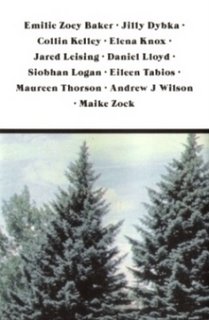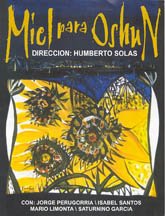
Anne Lamott: Operating Instructions
Here's something I wrote several years ago, the draft of something since edited and published for a library reference volume. Thanks, Cheri, for reminding me:
Anne
LamottErik France, Critical Essay on
Operating Instructions in
Nonfiction Classics for Students, The Gale Group, 2002.
France is a librarian and teaches history and interdisciplinary studies at University Liggett School and writing and poetry at Macomb Community College near Detroit, Michigan. In the following essay, he discusses ways that humor, faith, family, and friendship fuel her resilient approach to life as a first-time mother and persistent writer.
In Operating Instructions: A Journal of My Son's First Year, Anne Lamott employs a mixture of humor and pathos, witty observation, remembrance, and anecdote to carry the reader through her first year as a mother. She tells a compelling story that highlights her complicated life issues and resilient faith. Equally, she makes evident the charity and support of a wide variety of friends and relatives that help console and sustain her through many ups and downs. The calendar structure adds drama to the often exhausting life changes inherent in the first year of a mother-child relationship. Each sporadic entry is dated and usually includes a brief account of baby Sam Lamott’s growth and development that is written in a way that allows the reader to gain considerable insight into Anne’s ever-changing feelings and responses. Anne learns how to develop and protect her personal boundaries, especially how and when to say no to distractions and when to say yes to people who can and do truly help her.
Anne Lamott, at age thirty-five, painfully but successfully faces the challenge of sustaining her life as a writer while becoming a single parent. Her decision not to have an abortion, to rather follow her pregnancy through, results in Sam’s birth and her own increasing sense of responsibility to herself, her son, and to others. She is not alone in this transition. By this time in her life, she has developed a sense of faith; having already given up alcohol and drug addictions, she now turns more energetically to a network of healing people, a sort of mutual aid society. Anne Lamott’s willingness to ask for and receive help represents one of the main themes of Operating Instructions. She refers to the people closest to her as her “pit crew” (race car terminology for the people who maintain and repair a driver’s car and who look after the well-being of the driver, most crucially during the stress of actual races). She also uses the more general term “tribe,” a largely religious and anthropological metaphor for people bonded and responsible for helping each other at a deep level, to include other friends and acquaintances from her church and elsewhere. To appreciate how far Anne Lamott has come by the end of the book, one may usefully consider where she came from. She herself reflects in many journal entries about her past: this is part of her process of healing and living in a healthier, more hopeful way.
When the journal begins, Anne finds herself pregnant and utterly abandoned by the man who helped make her that way. This unnamed man, more than fifteen years older than her, is the latest and (she hopes) the last in her long string of relationships with men who she characterizes as “crummy.” But Anne’s complex set of problems and issues go further back than any of her boyfriends. They originated from her complicated and difficult family milieu. Situated in the San Francisco and Marin County area, Anne and her brothers John and Steve lived in a somewhat dysfunctional household with their parents, Dorothy and Kenneth Lamott. The children were exposed to a mix of left-leaning politics, intermittent Bohemianism, alcohol, drugs, and interesting people. Anne experienced many discussions and parties among her parents' friends and acquaintances, including a substantial number of people like her parents, agnostic and atheist thinkers and artists with social consciousness who believed in political activism. Anne retained the social consciousness, but, feeling a void without a sense of religious underpinning, she became, gradually and after years of stubborn resistance and self-abuse, a practicing Christian. This latter development played a major role in the raising of Sam, and many members of the St. Andrew Presbyterian Church of Marin City, California, helped and encouraged her along the way.
Still, despite the complications, Anne did benefit in two very lasting ways from her parents. Kenneth, a writer, provided a singularly positive attribute for Anne to learn from: as role model for her as a writer. He kept at his writing regularly, a disciplined habit that Anne picked up and, despite various addictive distractions and many years of self-sabotage, adhered to. During Sam’s first year, All New People, a novel she had completed reached the point of publication and distribution; she wrote a regular column for California magazine, she kept at the journal that became, in published form, Operating Instructions; and she was contracted for another magazine column, as well. Probably as much as her father, Anne’s mother also provided a strong role model in one particular way: Dorothy Lamott refused to place herself second to anyone. She had gone to law school and had eventually left the family and moved to Hawaii for a while to pursue her own dream. By the time of Anne Lamott’s 1989-1990 journal, Kenneth Lamott was long dead from a brain tumor, and Dorothy was back in California helping with Sam. In the meantime, Anne had increasingly turned to the rest of her tribe and pit crew to help her find her own way through life.
For many years, Anne had turned to addictive behaviors to deny the sense of grief and loss brought about by her offbeat upbringing, her parents’ divorce, and her father’s death, and to avoid having to deal with internal loneliness and longing. Since a teenager, she “tried everything in sometimes suicidally vast quantities—alcohol, drugs, work, food, excitement, good deeds, popularity, men, exercise, and just rampant obsession and compulsion—to avoid” facing herself, alone. Finally, when she is pregnant, she does face herself and somehow manages to go on. Though she must do the heaviest work herself, she is truly consoled and helped by her many disparate friends, one of whom, John Manning, is also a mutual friend of the man who abandoned her as soon as she told him he was pregnant.
Three remarkably important members of Anne Lamott’s tribe and pit crew described in Operating Instructions include her therapist Rita, her brother Steve, and her long-time friend Pamela Murray. Rita helps Anne come to terms with herself and discover forgiveness, including the ability to forgive herself for past excess. A recovering alcoholic and addict, Anne relies on Rita “mostly because I had so many variations on the theme of low self-esteem, with conceitedness marbled in, the classic egomaniac with an inferiority complex.” Between sessions with Rita and the demands of raising Sam, dealing with money issues, and continuing at her writing, Anne learns how to develop and protect her personal boundaries, especially how and when to say no to distractions and when to say yes to people who can and do truly help her. Anne’s brother Steve helps in practical ways, provides some comic relief, and serves as a reminder that not all men are “crummy.” Of Pamela, her best friend, Anne writes: “I could not have gone through this, could not be doing it now, without Pammy.” When Pammy is diagnosed with cancer during Sam Lamott’s first year, Anne is devastated; still, because of Sam, she persists. Though these three people stand out, there are many others who help Anne Lamott keep going, as well.
Finally, in addition to faith and the familial community of her tribe and pit crew, Anne Lamott keeps herself and others going with her biting jokes and general sense of humor. When not making fun of herself and her neuroses, she devotes many of her sarcastic quips to belittling a range of “crummy” men, including ex-sexual partners, a potential Republican boyfriend (she is a lifelong Democrat) from whom she decides to spare herself the poison, and even George Herbert Walker Bush, the standing president during Sam Lamott’s first year of life. Anne describes Bush as reminding every woman of their first “ex-.” Her passionate rage against Republicans is humorous as much for its excess as anything else. The diatribes against Bush also provide historical context for Operating Instructions. The San Francisco earthquake of 1989 does as well. Anne is able to see humor even during that disaster, for she recognizes and satirizes her obsessive concern for good reviews and sales of All New People even in the midst of the initial major earthquake and its aftershocks.
Reflecting on her son’s first year, Anne Lamott realizes that one cannot and need not be in control of all of life’s details. It is enough to have a grasp of the important things in life; beyond that, each day is a new adventure to be taken in daily terms. She paraphrases writer E. L. Doctorow’s night driving analogy about writing, adapting it to life: at night, one can only see as far as a beam of headlights permits, but if one is careful, that is enough to permit one to successfully drive all the way to one’s destination. Though it stands on its own, Anne Lamott further contemplates and explores the main themes of Operating Instructions in two subsequent nonfiction works: Bird by Bird: Some Instructions on Writing and Life, and Traveling Mercies: Some Thoughts on Faith.
Lamott, Anne. All New People, North Point Press, 1989.
——, Bird by Bird: Some Instructions on Writing and Life, Pantheon Books, 1994.
——, Traveling Mercies: Some Thoughts on Faith, Pantheon Books, 1999.
Ciao!
















































